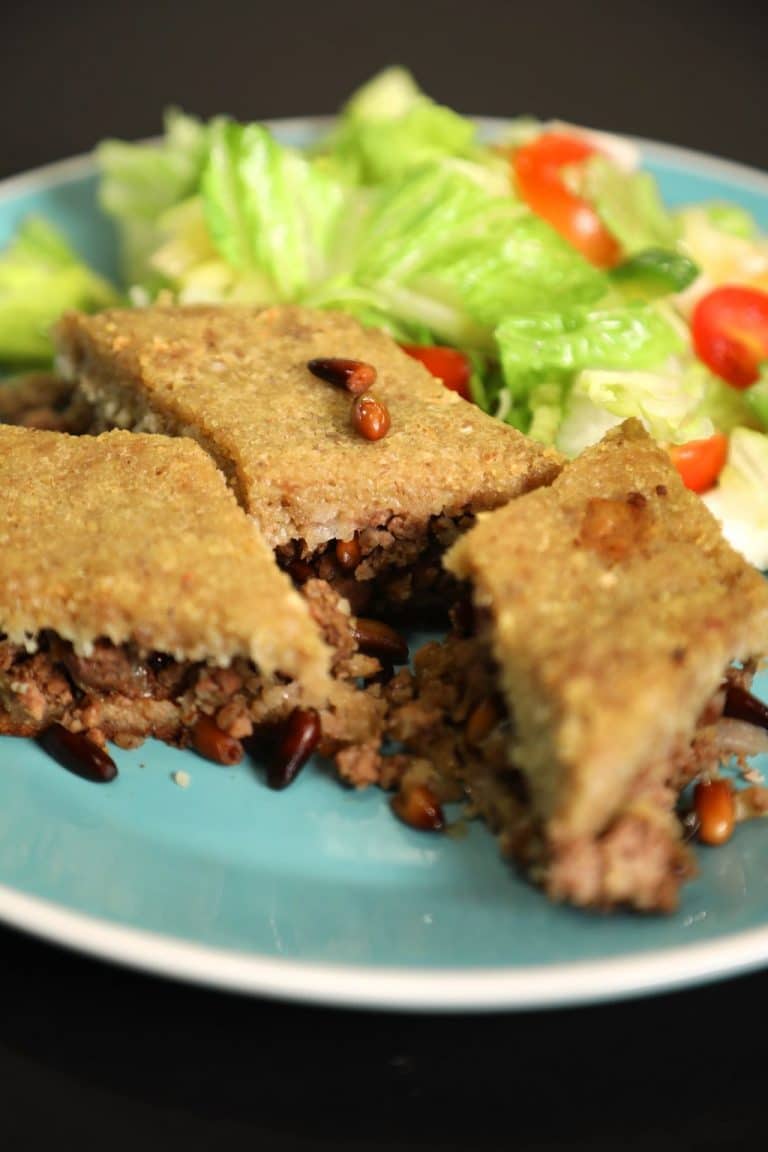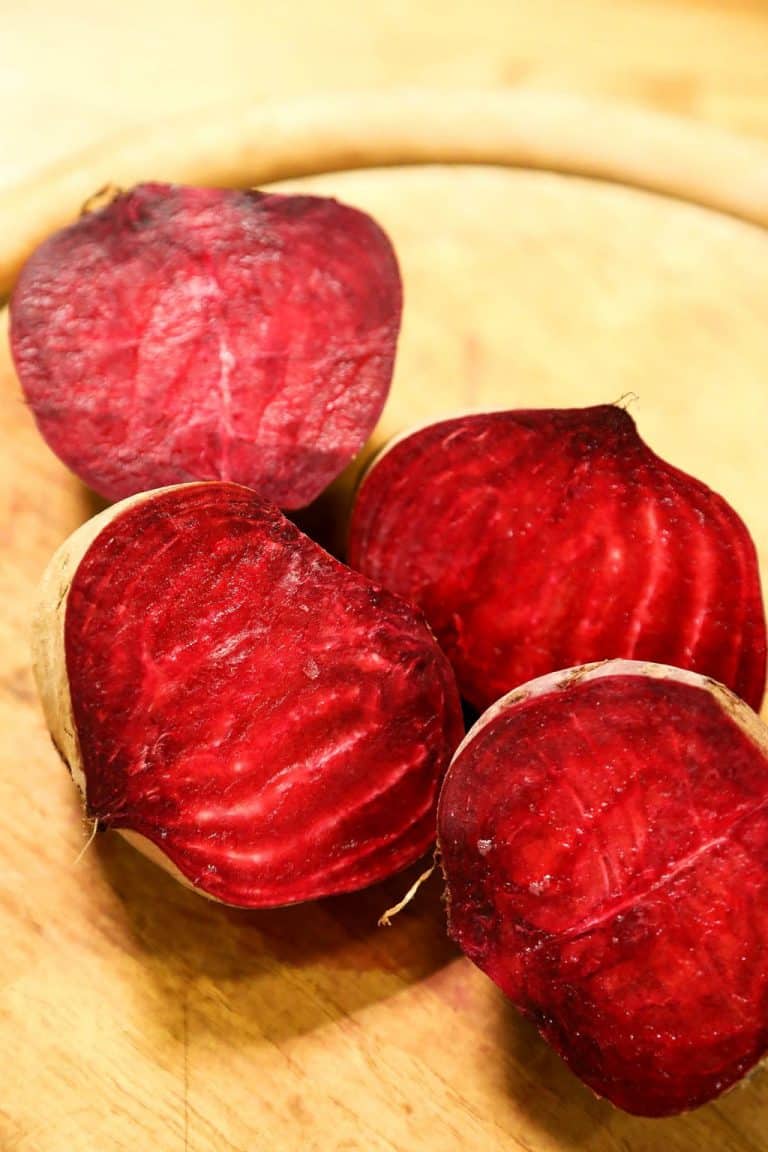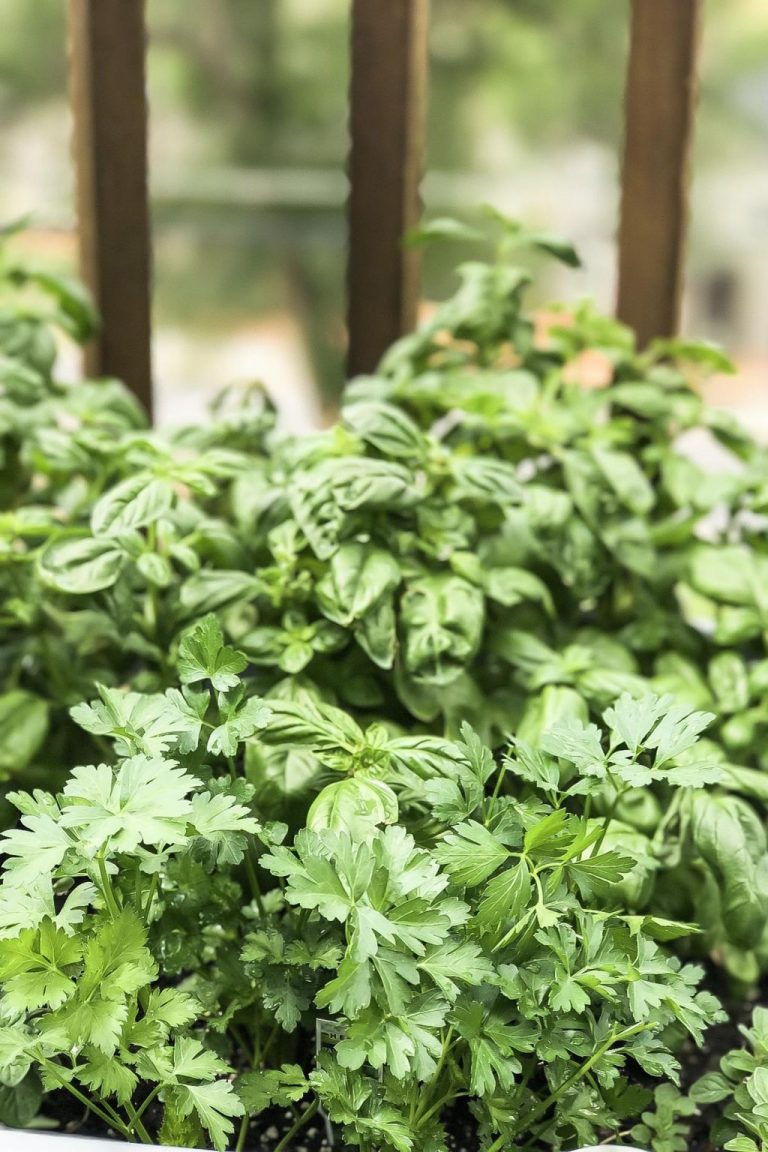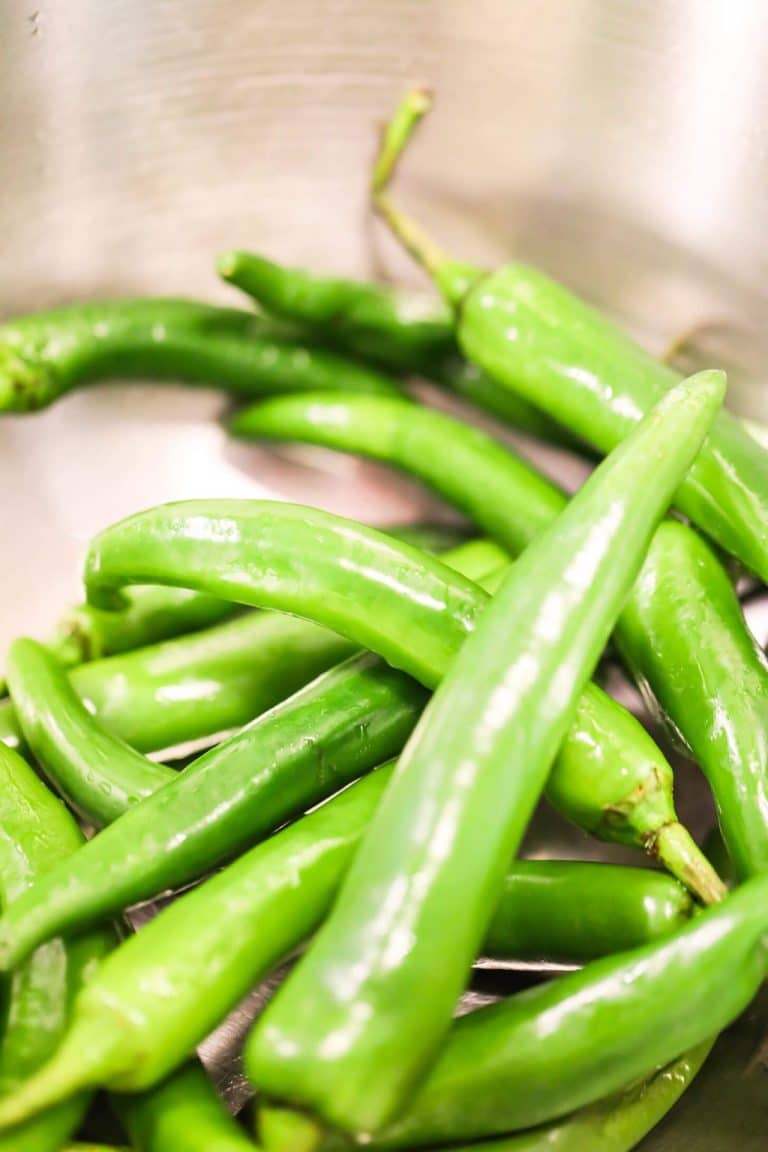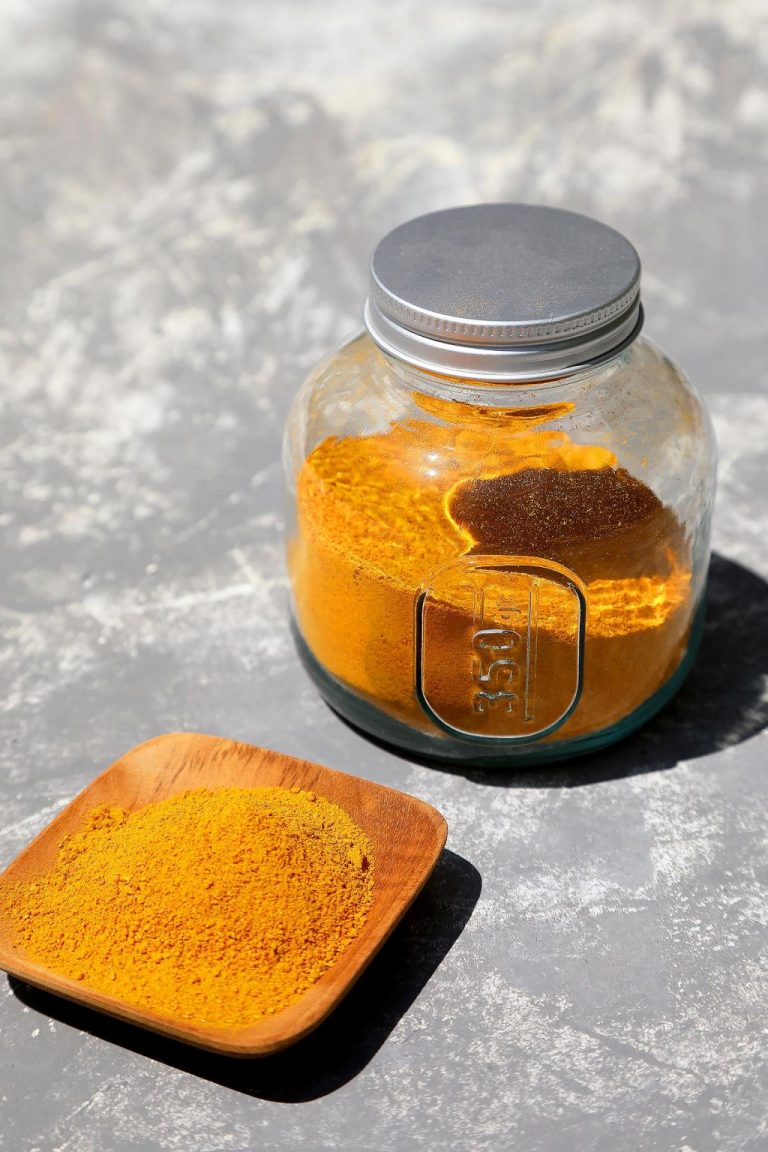How to Best Roast Eggplant
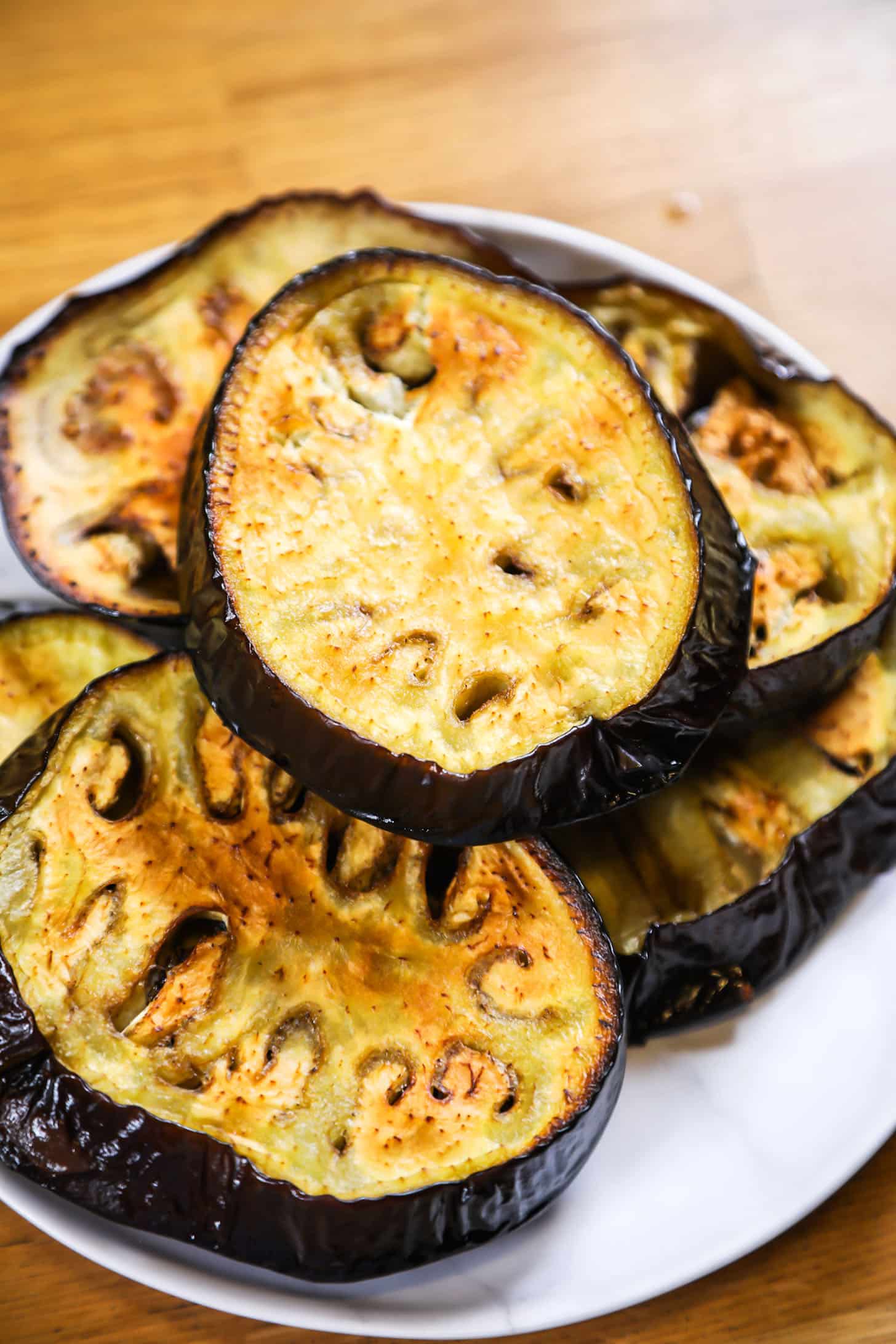
I have always loved eggplant, and roast eggplant in particular, for the way it just melts in the mouth.
This oven roasted eggplant recipe is sure to become your go to method for its simplicity.
Baba ganoush is a very well known gluten free Middle Eastern dish that utilizes baked eggplant as its base.
Eggplant parmesan is another that relies on roast eggplant slices for its unmatched flavors.
The eggplant is an amazingly versatile vegetable enjoyed the world over.
How to Roast Eggplant
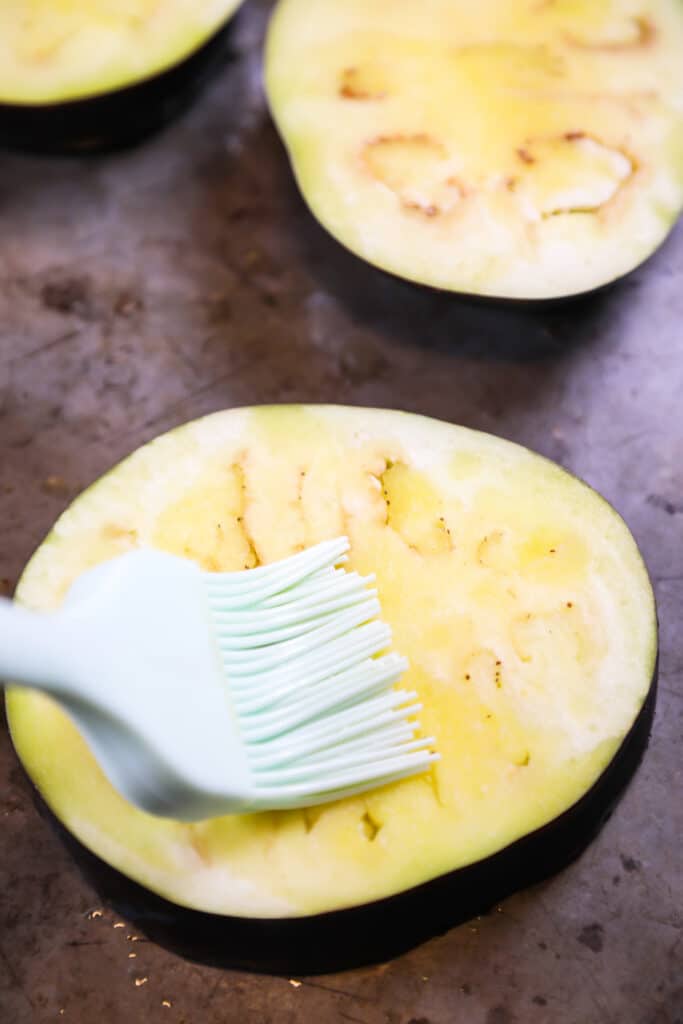
There are a couple of ways to easily roast eggplant in the oven.
Preheat the oven to 400 degrees fahrenheit (200ºC), to create a nice hot oven.
Poke the whole eggplants with a fork three or four times so that steam does not build up on the inside.
Built up steam will cause your baking to explode all over the oven.
Place the eggplants on a baking sheet and bake for at least 30 minutes, or until the eggplant is soft inside.
Remove from the oven and scoop out the insides for use in your favorite recipes.
Another method is to slice the eggplant into circles, place on a baking tray and sprinkle with salt.
After five minutes or so liquid will collect on the surface, wipe this off with paper towels.
Salting the eggplant these days with salt, or kosher salt, is not always necessary because modern varieties are not bitter.
Brush your eggplant rounds on either side with olive oil and bake for 15 to 20 minutes turning once.
Sprinkle some garlic powder on the eggplant before baking for a nice side dish.
History of Eggplant
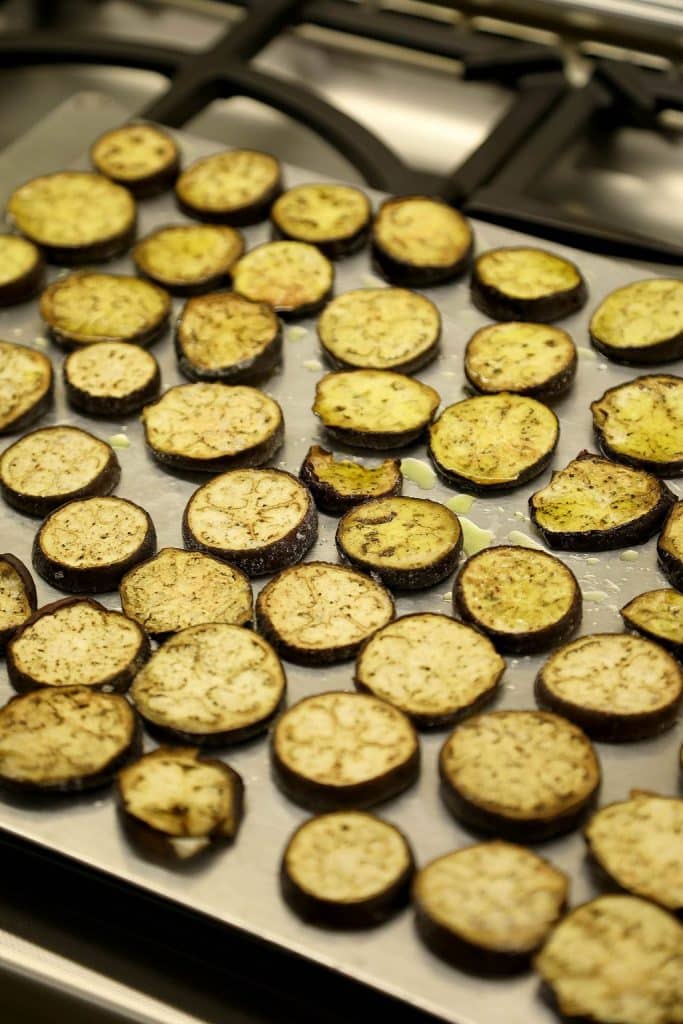
Eggplant, aubergine, or brinjal is a member of the solanaceae or nightshade family and is grown worldwide for its edible fruit.
This family also includes the tomato, potato, and peppers as part of its kin.
Eggplant is a delicate, tender and heat loving plant with thick, woody stems.
It has a purple color, usually glossy, and egg shaped most of the time.
The flowers have a white to purple color.
Although eggplant is a perennial, it is more commonly grown as an annual in temperate climates.
Eggplants typically grow 1-4 ft tall, however, semi wild types can grow much larger, up to 7 ft tall.
Eggplant is botanically categorized as a berry.
It contains many small and edible seeds that taste sour, because they contain or are covered in nicotinoid alkaloids, similar to tobacco.
Eggplant originates from India, where it continues to grow wild.
It has been cultivated throughout India and China for more than 1500 years.
Eggplant was introduced to Europe by Arabs traders, when the trade routes opened.
It’s said that Arabs introduced it to Spain as early as the 8th century.
In the 12th century, a book by Ibn Al-Awwam, a Muslim Arab agriculturist, described how to grow eggplant.
When it was initially introduced into the Arab world, it was met with distrust, since it was believed that eggplant caused health issues such as epilepsy.
Overtime, it was generally accepted and integrated into Arab cuisine, and became a popular ingredient in the Arab world.
Currently there are over 150 dishes that originate from the Middle East that use eggplant as a key ingredient.
Cultivation
Eggplant usually grows in tropical and subtropical climates.
Eggplant likes hot weather.
When grown in cold climates or areas with low humidity, it won’t produce mature fruit.
It requires at least five months of warm and sunny weather to produce fruit.
Farmers usually add transplants in March after the ending of the frost season, and when daytime temperatures are always above 70°F.
Temperatures below 50°F can harm the plant, that’s why it’s recommended to cover them if unexpected cold weather hits.
The plants are usually planted 24-36 inches spaced apart, because they usually grow into tall and angular plants.
A mature eggplant fruit has a glossy skin, and when sliced open, has soft immature seeds.
Immature fruit have no visible seeds inside, and in overripe ones, you will find hard and dark seeds.
Eggplants do not store well, and is why they are best used soon after harvesting.
Benefits of Eating Eggplant
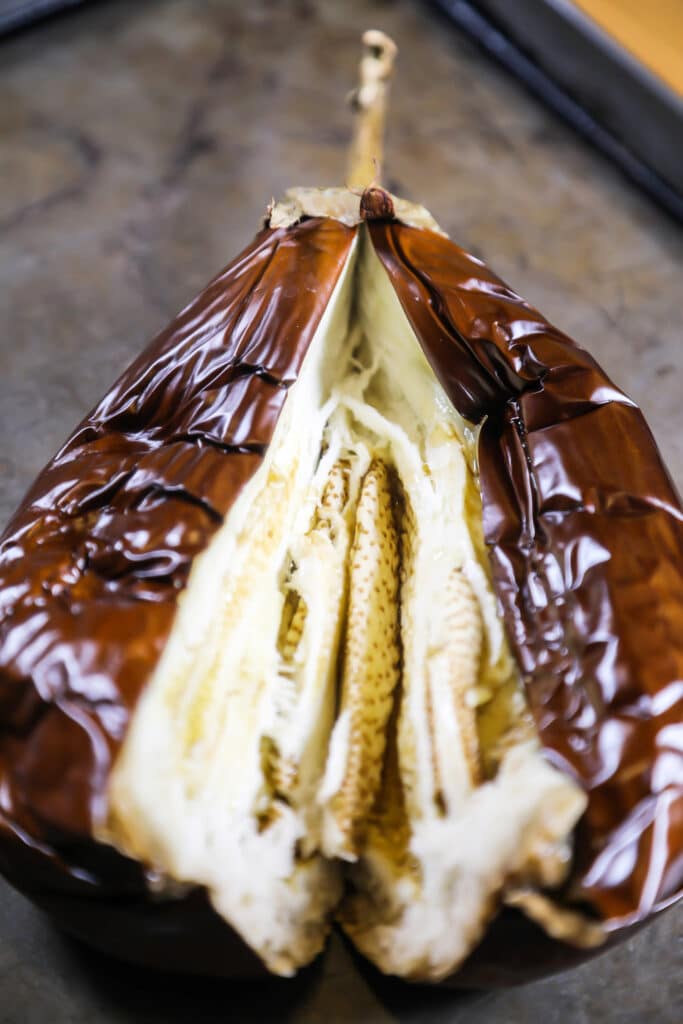
Eggplants are rich in fiber and antioxidants.
One serving of eggplant can provide 5% of a person’s daily requirement of fiber, B-6, thiamine, copper, and manganese.
Additionally, eggplant is rich in phenolic compounds which act as antioxidants.
Antioxidants help the body eliminate unstable molecules that can damage cells causing many diseases including cancer.
Eggplant can also support heart health, because it is rich in potassium, fiber, vitamin C, vitamin B-6, and antioxidants.
In addition, a 2014 study showed that chlorogenic acid, a primary antioxidant in eggplants, may decrease blood cholesterol and reduce the risk of nonalcoholic fatty liver disease.
This fruit also contains the antioxidants lutein and zeaxanthin.
Lutein is important for eye health as it can help prevent age-related vision degeneration.
Based on statistics, countries that consume and eat eggplants the most are China, Egypt, India, Turkey, and Iran.
Eggplant in Middle Eastern Cuisine
Eggplant can be cooked and prepared in many ways.
Very often steamed, stir-fried, pan fried, deep fried, roasted, stewed, or pickled.
In Middle Eastern cuisine, the eggplant is baked, stewed, deep fried, stuffed and rolled.
A famous Middle Eastern dish is Baba Ganoush, where eggplants are roasted in the skin until charred so the pulp can be removed.
The insides are scraped out, mashed, then mixed with other ingredients such as lemon, tahini, and garlic.
Baba Ganoush is similar to the greek dish melitzanosalata.
Eggplant is also used in moussaka, which is a cooked dish made up primarily of tomatoes and eggplant.
Moussaka is similar to the italian dish Sicilian caponata.
Moussaka may also include chickpeas, and can be served as a cold or hot mezze dish.
Another famous cooked dish is maqluba, which is flavored in spices and served with rice, lamb and lots of eggplant.
Another eggplant recipe is makdous; small eggplants are stuffed with red peppers and walnuts, then marinated in olive oil.
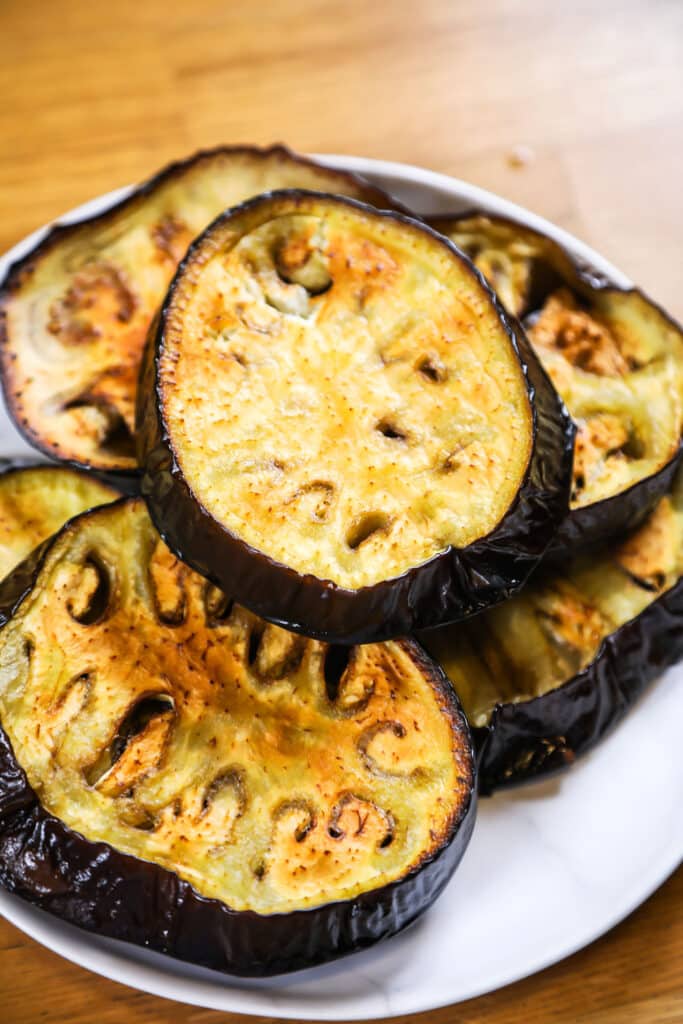
Eggplant in Global Cuisine
Raw eggplant has a sour taste, however, when cooked, becomes tender, with a rich and complex flavor.
Eggplant can absorb sauces very well, which makes eggplant dishes very versatile and popular.
It’s sometimes used as a meat alternative in vegan and vegetarian cuisines.
In Chinese cuisine, eggplants are often deep fried and made into famous dishes such as yúxiāng-qiézi, or fish fragrant eggplant.
In Japanese cuisine, eggplant is known as nasu or nasubi.
A famous japanese dish is hasamiyaki, where an eggplant is grilled and stuffed with meat.
Eggplants are also used in several Japanese expressions and proverbs, such as ‘don’t let your daughter-in-law eat your autumn eggplant.’
So delicious is the eggplant, the mother-in-law does not want to share it with non-full family members!
In the Philippines, eggplant is widely used in many stew and soup dishes, like pinakbet.
However, the most popular eggplant dish is tortang talong, which is an omelette made from grilled eggplant, dipped in beaten eggs, and pan-fried.
Eggplant is widely used in its native country India.
Famous dishes include sambar, a tamarind lentil stew, and dalma, a lentil dish with vegetables, chutney and curry.
They also pickle eggplants known as achaar, which is maybe where the middle eastern makdous originated from.
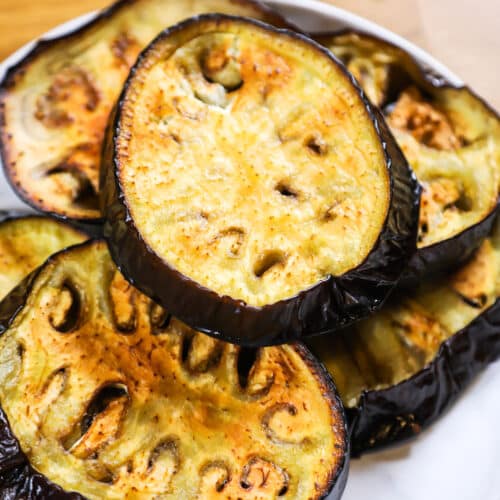
How to Best Roast Eggplant
Ingredients
- 1 Eggplant
Instructions
- If roasting a whole eggplant be sure to poke it with a fork several times before putting it in the oven.
- If doing slices, brush the slices with olive oil.
- Bake at 400ºF (200ºC) until soft.

